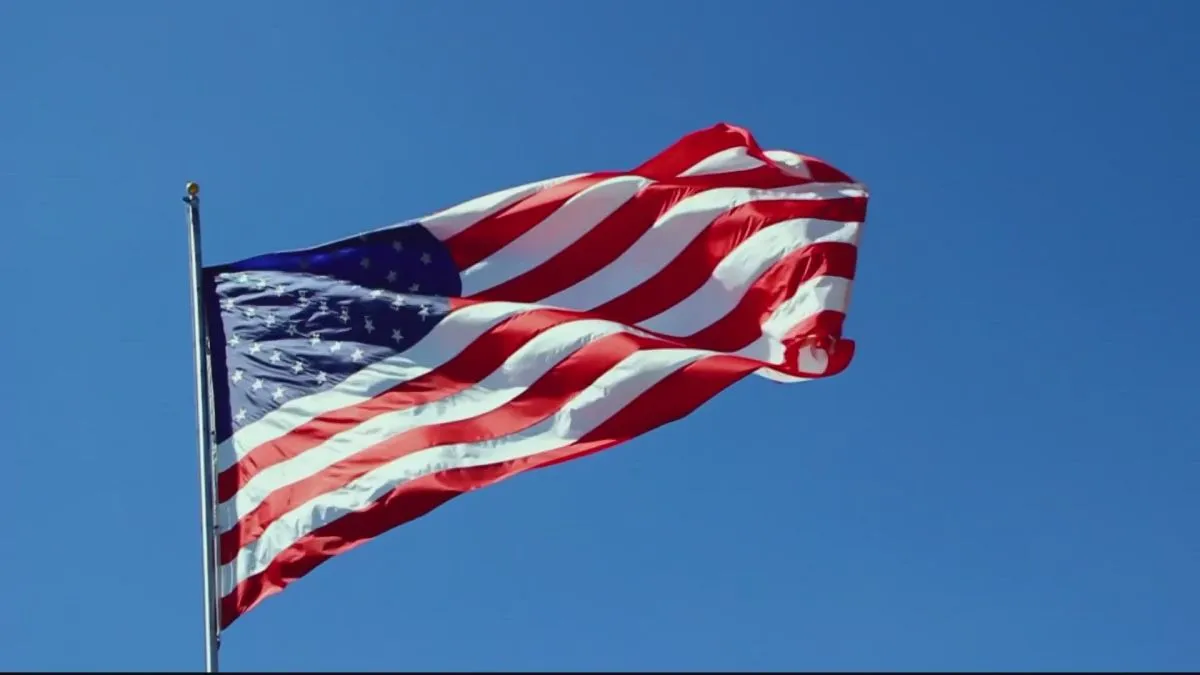The flag of the United States is more than a piece of fabric, it is a symbol of unity, resilience, and the evolving identity of a nation. The current flag is the 27th version of the national emblem, and each design throughout American history reflects a chapter in the country’s development. Let’s have a look at some of the previous Flags design and their significance.
Check out: Who Won the NBA Finals 2025? Check the NBA Championship Winner Here
List of National Flags of USA
Ready to see how the Stars and Stripes have changed over time? Let’s dive in!
| Flag Name | Dates of Use (or Significance) |
| Continental Colors / Grand Union Flag | Used until 1777 (early stages of the Revolutionary War). |
| Gadsden Flag | 1775; originally flown by Continental Marines; remains a symbol of patriotism. |
| Moultrie Flag | 1775; flown during the Battle of Sullivan’s Island. |
| Betsy Ross Flag (Legend) | Legend attributes its creation to Betsy Ross in June 1776. |
| 13 Stars, 13 Stripes | Established by the First Flag Resolution on June 14, 1777. |
| 15 Stars, 15 Stripes | Established by the Second Flag Act in 1794 (due to Vermont and Kentucky). |
| 20 Stars, 13 Stripes | First flag under the Third Flag Act; flown from July 4, 1818, to July 3, 1819. |
| 50 Stars, 13 Stripes | In use since 1959 (following admissions of Alaska and Hawaii); longest-used rendition. |
The first Flag
The first “official” flag that was adopted by the Continental Army was known as the ‘Grand Union Flag.’ This flag had featured thirteen red and white stripes representing the different colonies, with the Union Jack of the United Kingdom occupying the upper left corner. Interestingly, it closely resembled the flag of the British East India Company, which flew similar striped banners from 1701 to 1801. This flag was used until 1777, and served as a rallying point during the early stages of the Revolution.
The Gadsden Flag (1775)
The Gadsden flag was designed by Christopher Gadsden, this bold yellow flag displayed a coiled rattlesnake and the warning “DON’T TREAD ON ME.” This flag was originally flown by the Continental Marines, but it remains a symbol of American patriotism today.
The Moultrie Flag (1775)
Commissioned by Colonel William Moultrie, this flag bore a white crescent moon and the word “LIBERTY” on a navy blue field. It was flown during the Battle of Sullivan’s Island, marking an important American victory.
The Betsy Ross Legend
A popular American legend credits Elizabeth “Betsy” Ross, a Philadelphia seamstress, with sewing the first version of the U.S. flag. According to the story, she was approached in June 1776 by George Washington, Robert Morris, and George Ross to create a flag featuring thirteen six-pointed stars. Ross allegedly suggested five-pointed stars instead, impressing the men with her efficiency and skill and then it was used.
13 Stars, 13 Stripes
On June 14, 1777, the Second Continental Congress passed the first Flag Resolution, stating: “Resolved, That the flag of the United States be thirteen stripes, alternate red and white; that the union be thirteen stars, white in a blue field, representing a new constellation.” This resolution officially established the “Stars and Stripes” as the national flag. The layout of the stars was not specified, resulting in various designs including the Betsy Ross circle of stars.
15 Stars, 15 Stripes
The Second Flag Act, signed in 1794, increased the number of stars and stripes to 15 to represent the admission of Vermont and Kentucky. This flag remained in use even as more states joined the Union.
20 stars 13 Stripes Flag
But after some time, as per the need for a more sustainable system, Congress passed the Third Flag Act in 1818, mandating that:
-
A new star be added for each new state,
-
The number of stripes revert to thirteen, honoring the original colonies.
So, the first flag under this act had 20 stars and 13 stripes, flown from July 4, 1818, to July 3, 1819. In 1782, Charles Thomson, Secretary of the Congress, described the meaning of the flag’s colours, while drafting the Great Seal of the United States:
-
White: Purity and innocence
-
Red: Hardiness and valor
-
Blue: Vigilance, perseverance, and justice
These interpretations have since been widely accepted as the symbolic foundation of the American flag.
The Current Flag: 50 Stars for 50 States
The present version of the U.S. flag with fifty stars has been in use since 1959, following the admissions of Alaska and Hawaii. It is the longest-used rendition in American history.
Check out: Which US State is called Peach State and Why?
Conclusion
From the Grand Union Flag to today’s iconic Stars and Stripes, the national flags of the United States tell a powerful story of revolution, expansion, and unity. Each version reflects a moment in history and a nation’s journey toward becoming the republic it is today.
